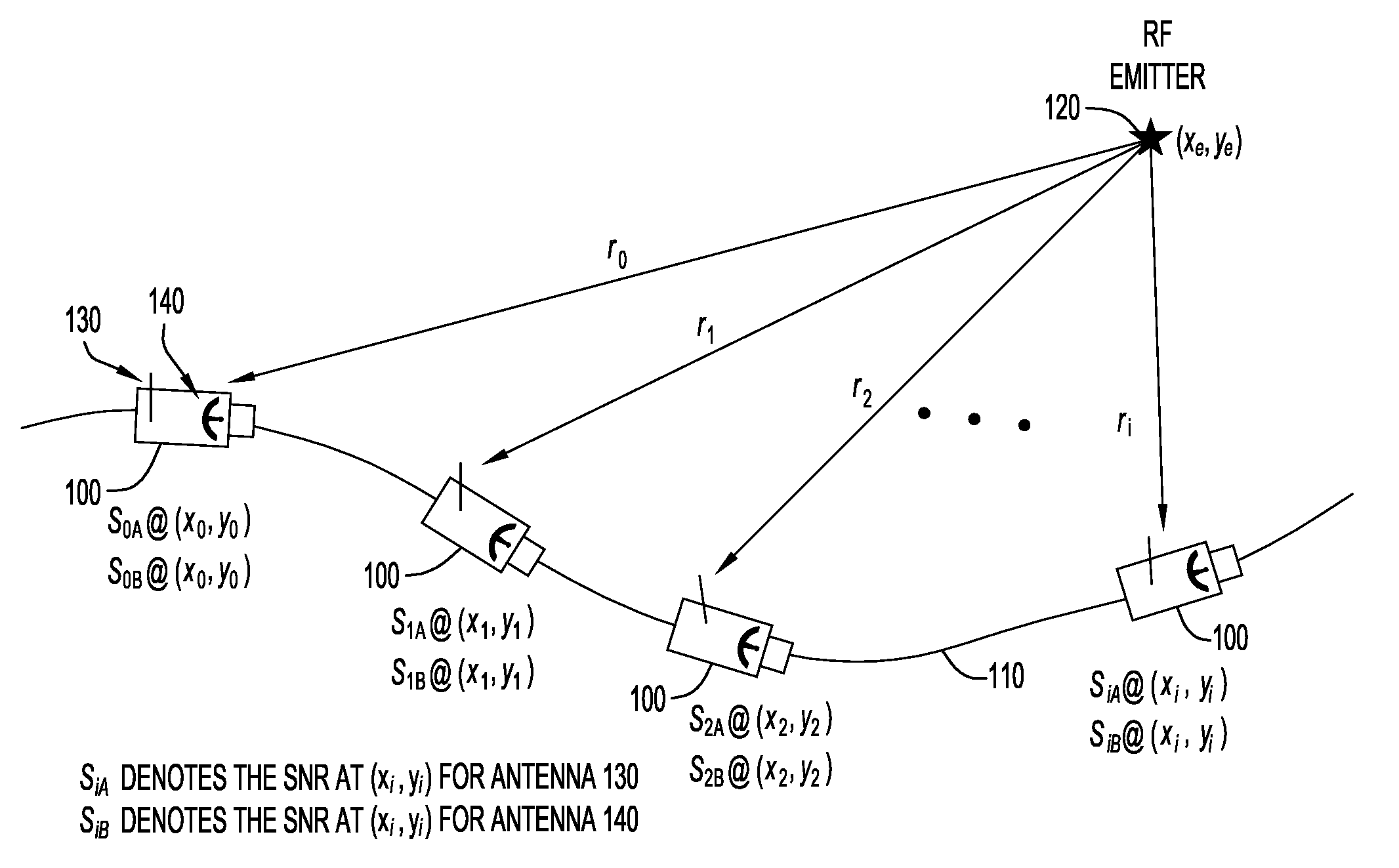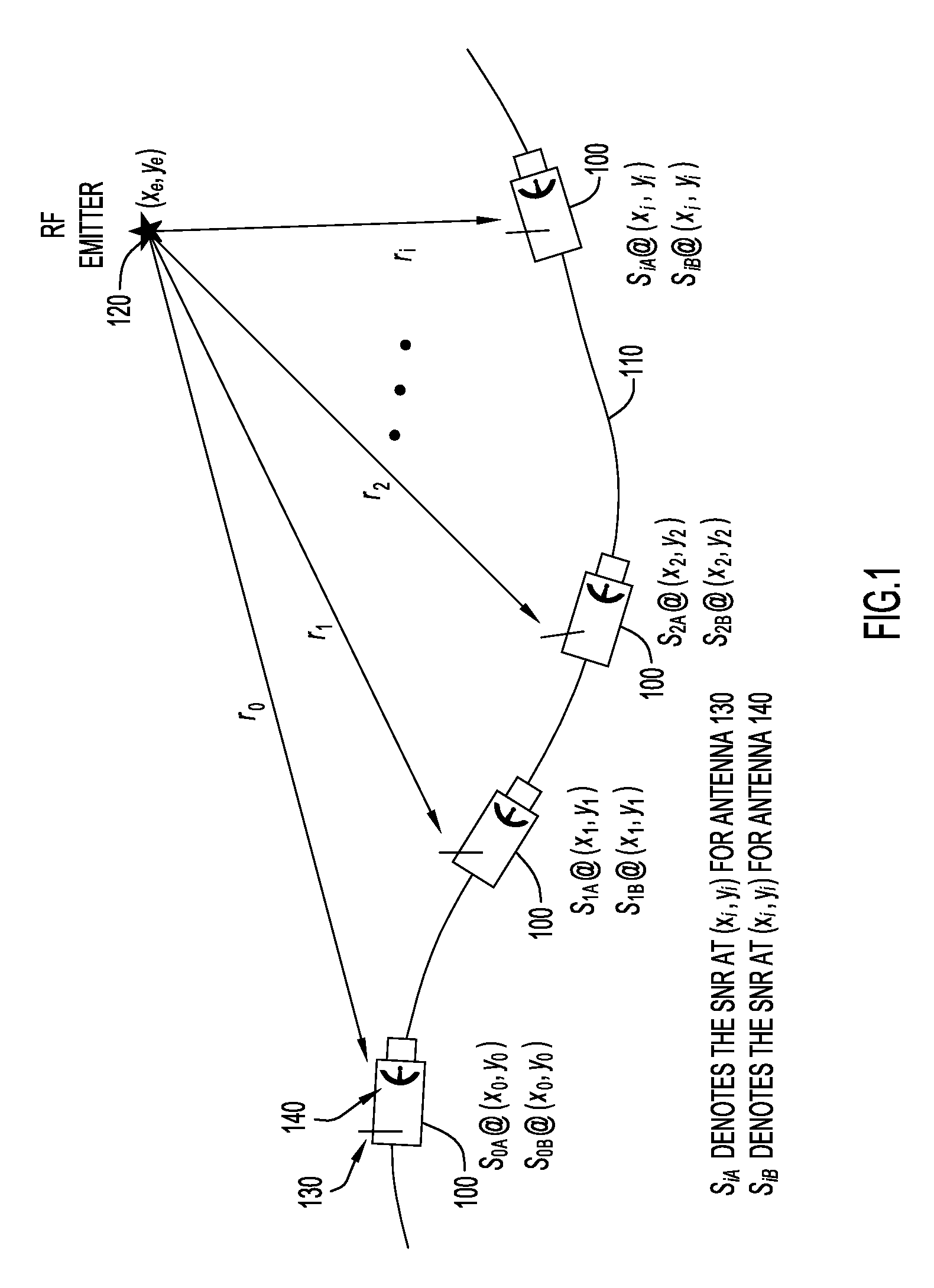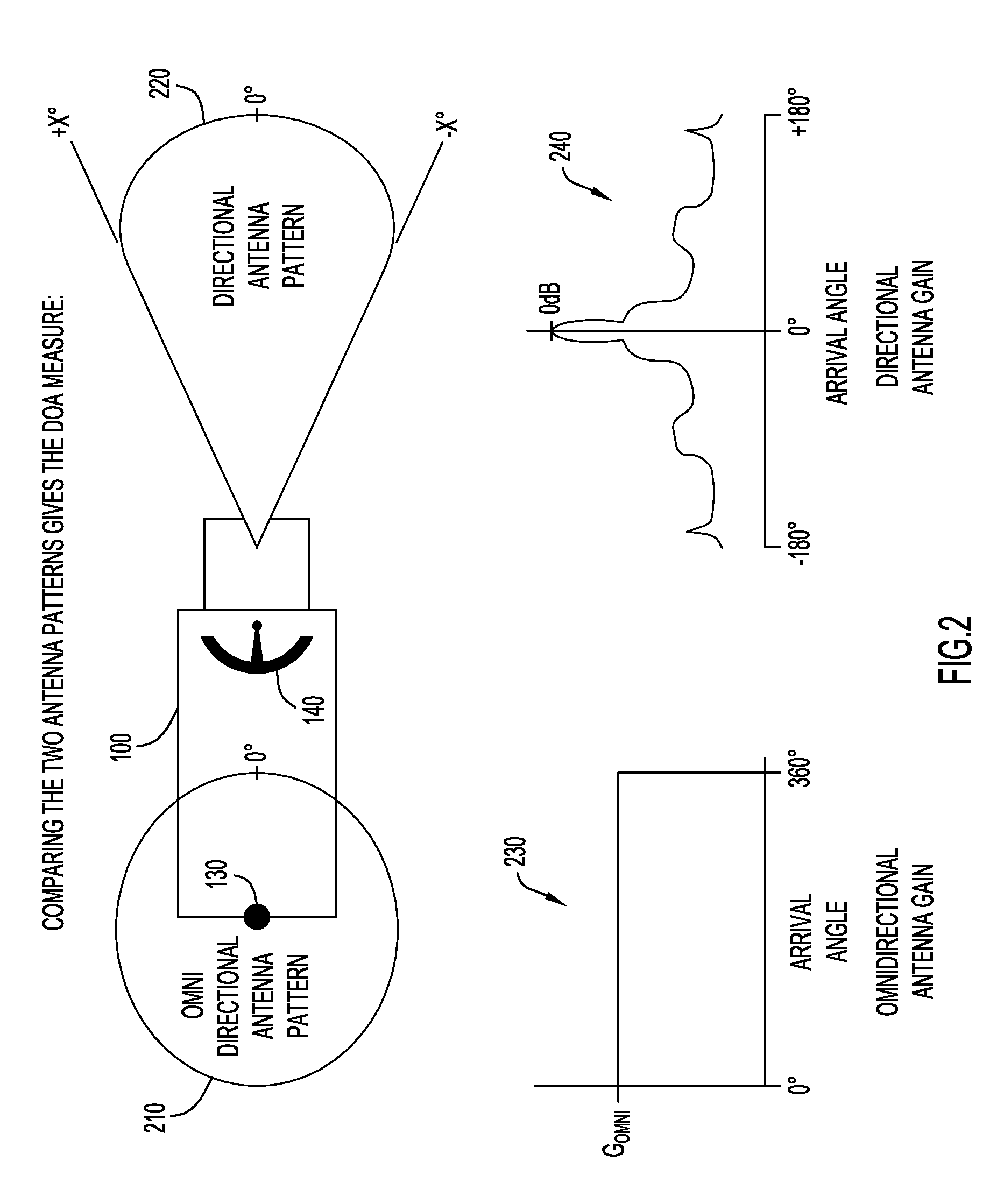System and method for direction finding and geolocation of emitters based on line-of-bearing intersections
a technology of line-of-bearing intersections and direction finding, applied in direction finders, direction finders using radio waves, instruments, etc., can solve the problems of large number of real-time measurements and/or terrain modeling, inability to accurately determine the location of emitters, and high computational cos
- Summary
- Abstract
- Description
- Claims
- Application Information
AI Technical Summary
Benefits of technology
Problems solved by technology
Method used
Image
Examples
Embodiment Construction
[0021]Embodiments of the present invention pertain to a pair-wise line-of-bearing (LOB) based geolocation technique that obtains reliable geolocation estimates of a radio frequency (RF) emitter based on signal-to-noise ratios (SNRs) of transmitted signals received at a sensor. The geolocation of a radio frequency (RF) emitter is a critical need for many applications. The technique of present invention embodiments may be employed with a ground-based or with unmanned aerial vehicles (UAV). These types of vehicles are well suited for enabling pair-wise line-of-bearing (LOB) geolocation of radio frequency (RF) emitters of interest.
[0022]An example environment for determining the geolocation of a radio frequency (RF) emitter is illustrated in FIG. 1. Specifically, the environment includes a radio frequency (RF) emitter 120 and a mobile sensor 100 (e.g., a truck or tracked vehicle with radio frequency (RF) sensors, etc.). The mobile sensor travels along a path 110 (e.g., a road or other s...
PUM
 Login to View More
Login to View More Abstract
Description
Claims
Application Information
 Login to View More
Login to View More - R&D
- Intellectual Property
- Life Sciences
- Materials
- Tech Scout
- Unparalleled Data Quality
- Higher Quality Content
- 60% Fewer Hallucinations
Browse by: Latest US Patents, China's latest patents, Technical Efficacy Thesaurus, Application Domain, Technology Topic, Popular Technical Reports.
© 2025 PatSnap. All rights reserved.Legal|Privacy policy|Modern Slavery Act Transparency Statement|Sitemap|About US| Contact US: help@patsnap.com



